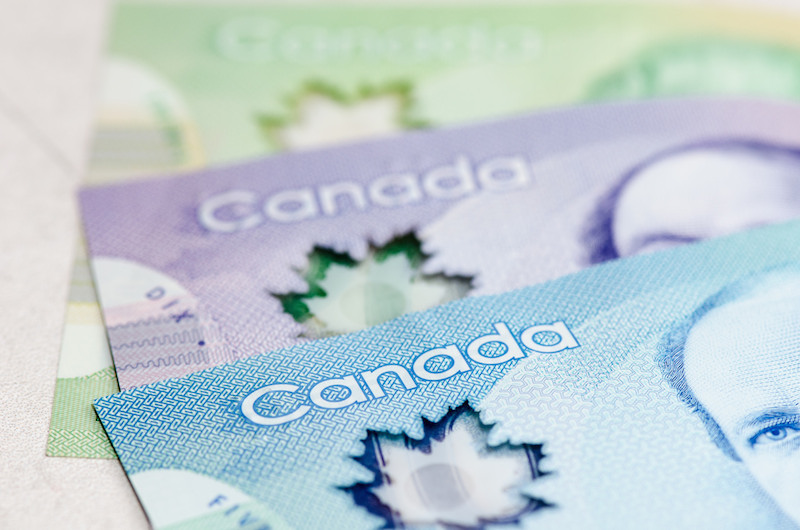
Photo: KMR Photography,flickr
Op-ed: Manitoba’s money problem
The following is an op-ed written by Wayne Simpson, professor of economics. It was originally published in the Winnipeg Free Press on Mar. 23, 2017.
How can Manitoba pay its bills?
Provincial accounts data collected by Ronald Kneebone and Margaret Wilkins at the University of Calgary School of Public Policy permit a comparison of Manitoba’s spending patterns and revenue sources with other provinces since 1980. The data show Manitoba’s revenue per capita had risen to the top of the provincial pack as of the 2014-15 fiscal year. In a similar fashion to spending, Manitoba’s revenue surge can be traced to the mid-90s.
From 1980 to 1996, Manitoba’s revenue growth was in the middle of the provincial pack. Since 1996, however, Manitoba’s revenue growth outstrips all other provinces at 137 per cent. This includes Alberta (83 per cent growth) and Saskatchewan and Ontario (both 93 per cent).
Since the surge in revenue begins a bit before spending takes off in Manitoba, it seems natural to ask whether there might be some causal effect of higher revenue to higher spending. Standard statistical causality tests applied to the data suggest that this is the case, that Manitoba revenue growth has preceded spending growth but not vice versa. Spending in response to income growth is not unique to Manitoba, however, as all other provinces except B.C. exhibit a similar pattern. Nor is it perhaps surprising, since several provincial revenue streams are cyclical and less predictable, and hence more difficult to control than program spending.
The data can also shed some light on the major sources of revenue growth and potential future revenue problems. Manitoba’s revenue from personal income tax has risen from the bottom of the provincial pack in 1980 to third, at $2,433, behind Quebec and Alberta, although the low personal tax rates in Alberta leave much more room to raise revenue than higher-tax regimes such as Quebec and Manitoba. Revenue from Manitoba’s retail sales tax was also the lowest of any province in 1980-81 but has climbed steadily to the middle of the pack and, since the last increase in 2013, has risen to $1,721, behind only Quebec.
A taxing problem
The limitations of the Manitoba economy are most clearly reflected in corporate income tax and federal transfer revenue. Corporate tax revenue has consistently lagged behind the other provinces, including now oil-rich Saskatchewan since 2005, and yields only $439 per capita.
This is merely one-third of the corporate tax yield in Alberta and Quebec, and about 60 to 70 per cent of yields per capita in the other provinces. Since the corporate tax rate in Manitoba (12 per cent) is similar to other provinces, Manitoba’s revenue reflects primarily a weak corporate tax base.
With respect to federal transfer money, Manitoba’s perennial “have not” status has consistently yielded more revenue per capita than any of the other provinces. Moreover, that gap is widening, such that Manitoba’s per capita transfers of $2,974 are 45 per cent more than the other perennial “have not” province, Quebec, and about double that of the other provinces. Federal transfers account for 26 per cent of total Manitoba revenue, only slightly higher than Quebec but much higher than the other provinces (13 to 18 per cent of total revenue). Of course, the provincial comparison has ignored the Maritimes, where reliance on federal transfers is even higher than Manitoba (at 33 to 41 per cent of revenue).
Manitoba’s steady but unspectacular economic performance is also reflected in the catch-all category, other own source revenue, where Manitoba has remained in the middle of the pack and sits in third place at $3,939 per capita in 2014-15, well behind Alberta and Saskatchewan but well ahead of Quebec and Ontario and slightly ahead of B.C. Much of the difference here is a result of natural resource revenues that are much more volatile in Alberta and Saskatchewan than in the other provinces, creating their own set of budgetary challenges when oil prices collapse.
Manitoba’s revenue leadership is entirely attributable to federal transfer payments, as all other revenues would leave the province in the middle of the pack at $8,533 per capita in 2014-15, ahead of Ontario, Quebec and B.C. but behind Alberta and Saskatchewan. Since 2010, however, federal transfer payments to Manitoba have declined by 15 per cent, while other provinces have seen modest growth (eight to nine per cent in Quebec and Alberta), little change (Ontario and Saskatchewan) or more modest decline (seven per cent in B.C.).
As deteriorating economic performance in the “have” provinces works its way through revenue-sharing arrangements, principally equalization payments, and as other federal transfer arrangements with the provinces are renegotiated, there should be concern that federal transfers may continue to decline and frustrate efforts to manage the provincial deficit even with significant spending restraint.






